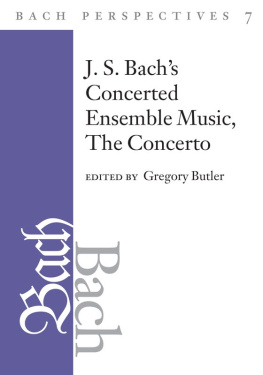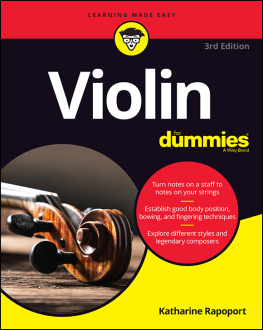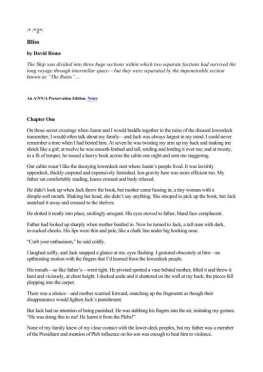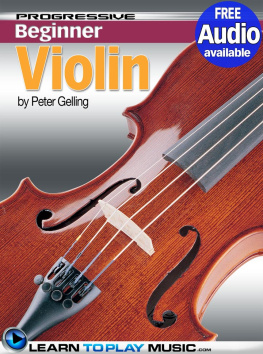JEAN SIBELIUSS VIOLIN CONCERTO
Oxford KEYNOTES
Series EditorKevin C. Karnes
Sergei Prokofievs Alexander Nevsky
Kevin Bartig
Rodgers and Hammersteins Carousel
Tim Carter
Aaron Coplands Appalachian Spring
Annegret Fauser
Arlen and Harburgs Over the Rainbow
Walter Frisch
Arvo Prts Tabula Rasa
Kevin C. Karnes
Beethovens Symphony No. 9
Alexander Rehding
Claude Debussys Clair de Lune
Gurminder Kaur Bhogal
Brian Enos Ambient 1: Music for Airports
John T. Lysaker
Alfred Schnittkes Concerto Grosso no. 1
Peter J. Schmelz
Jean Sibeliuss Violin Concerto
Tina K. Ramnarine

Oxford University Press is a department of the University of Oxford. It furthers the Universitys objective of excellence in research, scholarship, and education by publishing worldwide. Oxford is a registered trade mark of Oxford University Press in the UK and certain other countries.
Published in the United States of America by Oxford University Press
198 Madison Avenue, New York, NY 10016, United States of America.
Oxford University Press 2020
All rights reserved. No part of this publication may be reproduced, stored in a retrieval system, or transmitted, in any form or by any means, without the prior permission in writing of Oxford University Press, or as expressly permitted by law, by license, or under terms agreed with the appropriate reproduction rights organization. Inquiries concerning reproduction outside the scope of the above should be sent to the Rights Department, Oxford University Press, at the address above.
You must not circulate this work in any other form and you must impose this same condition on any acquirer.
Library of Congress Control Number: 2020936082
ISBN 9780190611538 (hbk.)
ISBN 9780190611545 (pbk.)
ISBN 9780190611569 (epub.)
Series Editors
Introduction
Oxford Keynotes reimagines the canons of Western music for the twenty-first century. With each of its volumes dedicated to a single composition or album, the series provides an informed, critical, and provocative companion to music as artwork and experience. Books in the series explore how works of music have engaged listeners, performers, artists, and others through history and in the present. They illuminate the roles of musicians and musics in shaping Western cultures and societies, and they seek to spark discussion of ongoing transitions in contemporary musical landscapes. Each approaches its key work in a unique way, tailored to the distinct opportunities that the work presents. Targeted at performers, curious listeners, and advanced undergraduates, volumes in the series are written by expert and engaging voices in their fields, and will therefore be of significant interest to scholars and critics as well.
In selecting titles for the series, Oxford Keynotes balances two ways of defining the canons of Western music: as lists of works that critics and scholars deem to have articulated key moments in the history of the art, and as lists of works that comprise the bulk of what consumers listen to, purchase, and perform today. Often, the two lists intersect, but the overlap is imperfect. While not neglecting the first, Oxford Keynotes gives considerable weight to the second. It confronts the musicological canon with the living repertoire of performance and recording in classical, popular, jazz, and other idioms. And it seeks to expand that living repertoire through the latest musicological research.
Kevin C. Karnes
Emory University
Contents
www.oup.com/us/jsvc
Oxford University Press has created a website to accompany Jean Sibeliuss Violin Concerto that features a variety of related multimedia materials, including audio clips and additional texts that extend the discussion on Sibeliuss nature-based aesthetics, the Sibelius violin concerto, and issues around violin pedagogy. Many of these resources are integral to the volume itself or provide needed and useful context. As with all of the websites for Oxford Keynotes volumes, the reader is encouraged to take advantage of this valuable online information to expand their experience beyond the print book in hand. Examples available online are indicated in the text with Oxfords symbol [ ]
]
My research has been assisted by the remarkable guidance of staff at the Sibelius Museum Archive in Turku, Finland. I would like to extend particular gratitude to Sanna Linjama-Mannermaa for alerting me to relevant archive materials and photographic images. I also thank Johannes Brusila for sending me bibliographic material, which was difficult to locate, and Rutger Helmers for sharing information about violinists from all around Europe who visited or worked in Russia during the nineteenth century. The musician Timo Alakotila sent me the score of his prelude, commissioned for a 2019 BBC Proms performance of Sibeliuss violin concerto with Pekka Kuusisto as soloist. Petra Piiroinen sent a photograph of the violinist Pekka Kuusisto from the collection of Our Festival in Finland, and Jelle Pieter de Boer sent his documentary photograph of the violinist Ida Haendel. I thank them all for their permission to reproduce these materials in this book. My research benefited from discussions with various musicians, and I am also grateful that Sophia Ramnarine kindly interviewed Kuusisto for this project and that Kevin C. Karnes, editor of the Oxford Keynotes series, read drafts of this volume and offered highly insightful comments.
Jean Sibeliuss Violin Concerto
I want so much to learn to play the violin.
Jean Sibelius, 1881
Beauty as a philosophical discourse rests on aesthetic considerations, which are often articulated in terms of the relations between the symbolic and the social. For the German philosopher Georg Wilhelm Friedrich Hegel, these relations have a metaphysical dimension: beauty is the divine disclosed, and it is a universal form of a self-unfolding idea.
What is the labor of virtuosity? Asking this question invites a new paradigm for virtuosity in the twentieth- and twenty-first centuries, which takes into account effort, rather than only extending nineteenth-century ideas about Tolstoy valued sincerity over beauty, since, in his view, the latter was a highly subjective aesthetic judgment.
Audiences are witnesses to the labor of virtuosity, to the spectacles of skill that are full of risk because of the unpredictability of live performance. The bravura tradition of Sibeliuss time gave rise to the figure of the celebrity virtuoso, upon whom audiences concentrated their romantic ideals of heightened emotional experiences and aesthetic appreciation. One nineteenth-century legacy is seeing the This vision of sorcery is focused entirely on musical concerns. Its allusion to communication between the virtuoso and the audience is not the same as that found in Hegels or Tolstoys discussions of the sociopolitical purpose of works of art.
Sibelius began to sketch the violin concerto when he was in Italy, home to the workshops of some of the most famous luthiers, the virtuosos of instrument manufacture, including Stradivarius, Guarneri, and Amati. The work was premiered in 1904. Sibelius worked further on it the following year, largely prompted by his habit of compositional revision. As he polished its musical ideas for structural coherence, he drew on his specialist knowledge of the instruments technical capacities, leading to an integration of his performance and compositional practices. His friend Baron Axel Carpelan, a fellow violinist who hoped Sibelius would compose this concerto, was the basis for a fictional protagonist of a novel, who described the sounds of the violin as animal sinews forced to labor, and to utter shrieked protests.















 ]
]